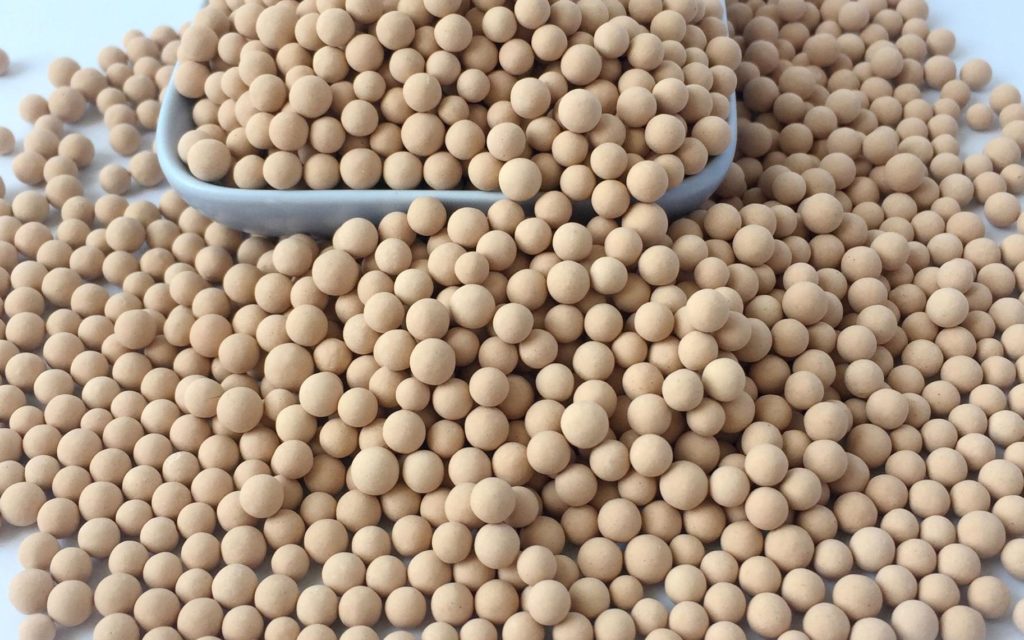How is molecular sieve produced?
Molecular sieves as microscopic crystals in powder form before being moulded into exrudates and granules. Molecular sieve crystals are grown in special solutions at high temperatures. The solutions are prepared by loading a mixture of different components in a specific ratio into a crystallizer. Seeding the solution guarantees the crystals grow in the right direction. The use of automatic devices eliminates error margins, and guarantees high quality. Crystal growth is checked hourly. Specialists identify the molecular sieve type and can control crystallinity with the help of X-ray diffractometers. Additionally, crystal size is also monitored using Fritch Nanotech lasers that analyze particle dispersiveness. Each molecular sieve type has its own chemical composition which is checked by a high-accuracy inductively coupled plasma mass spectrometer (ICP-MS).

The suspension thus obtained is then filtered when crystal growth has finished. molecular sieve crystals are washed from the mother solution on Pannevis belt filters and then are dehydrated in drum driers. That is the final stage in the production of molecular sieve powder. Theoretically, this powder should have a static water capacity of 25% at 100% crystallinity which means that under certain conditions the molecular sieve can adsorb 25% of its weight in water.
Libra specialists measure water adsorption capacity at 25℃ and a humidity of 10%. But molecular sieve powders alone are insufficient for use in gas-drying, first they must be converted into granules by mixing the molecular sieve powder with a binder and subjecting the mix to high pressure. The extrudate now has a lower water adsorption capacity of only 20%. why is the water adsorption capacity less? The answer is simple-the additional binder does not adsorb water; it does, however, add bulk.
Static water adsorption capacity is not as important for synthetic molecular sieves as dynamic water adsorption capacity. At an industrial level, molecular sieves are subjected to rapid streams of gas, therefore it is essential that water be adsorbed quickly. For this reason, Libra specialists measure the dynamic water adsorption capacity of each production batch.
Libra Chemical is a major supplier of adsorbents and catalysts in China, boasting a great deal of experience in molecular sieve production. We carefully examine each stage of molecular sieve preparation, invest in modern facilities and choose the most effective engineering methods.

